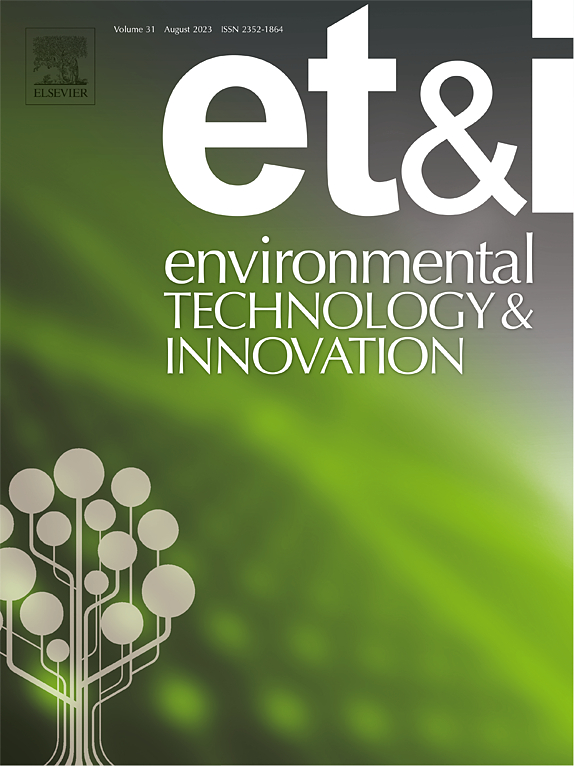Simultaneous detection and quantification of ciprofloxacin, doxycycline, and levofloxacin in municipal lake water via deep learning analysis of complex Raman spectra
IF 6.7
2区 环境科学与生态学
Q1 BIOTECHNOLOGY & APPLIED MICROBIOLOGY
引用次数: 0
Abstract
In recent years, the misuse of antibiotics has led to severe pollution in water environments, with excessive residues in lake water damaging ecosystems and promoting the emergence of antibiotic-resistant bacteria. Therefore, rapid detection of antibiotic residues in the environment is crucial. This study introduces a novel method for the simultaneous quantification of mixed antibiotics in lake water using Surface-Enhanced Raman Scattering (SERS) combined with deep learning methods. To demonstrate the accuracy of our experiments, we tested four lake water samples collected from four distinct sampling points of an artificial lake in a municipal city in China. We independently analyzed each sample mixed with commonly used antibiotics, including ciprofloxacin, doxycycline, and levofloxacin. A non-negative elastic network was then employed to predict concentration ratios of mixed antibiotics in the lake water samples. The results showed that the established method can accurately quantify the ratios of individual antibiotics in mixed solutions at all four lake water sampling points. This approach facilitates the identification and quantification of antibiotics in lake water with simplicity and rapidity, exhibiting potential application for real-world monitoring of fluctuations of antibiotic residues in natural water systems.
求助全文
约1分钟内获得全文
求助全文
来源期刊

Environmental Technology & Innovation
Environmental Science-General Environmental Science
CiteScore
14.00
自引率
4.20%
发文量
435
审稿时长
74 days
期刊介绍:
Environmental Technology & Innovation adopts a challenge-oriented approach to solutions by integrating natural sciences to promote a sustainable future. The journal aims to foster the creation and development of innovative products, technologies, and ideas that enhance the environment, with impacts across soil, air, water, and food in rural and urban areas.
As a platform for disseminating scientific evidence for environmental protection and sustainable development, the journal emphasizes fundamental science, methodologies, tools, techniques, and policy considerations. It emphasizes the importance of science and technology in environmental benefits, including smarter, cleaner technologies for environmental protection, more efficient resource processing methods, and the evidence supporting their effectiveness.
 求助内容:
求助内容: 应助结果提醒方式:
应助结果提醒方式:


